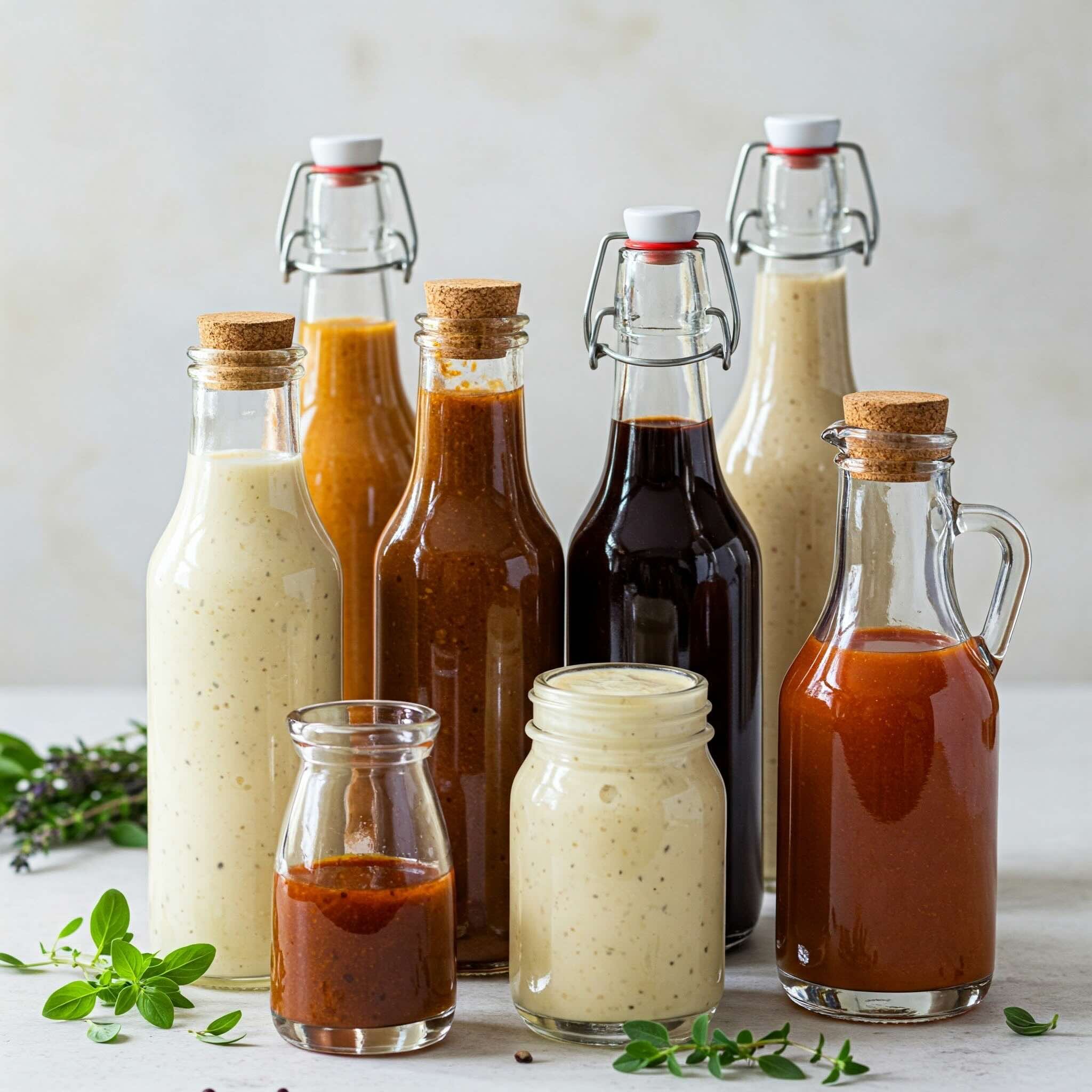Mastering Salad Dressings & Vinaigrettes for Balanced Taste
A salad is only as good as its dressing. The right vinaigrette or creamy dressing can take a simple bowl of greens from forgettable to flavour-packed.
Mastering salad dressings means understanding how acidity, fat, sweetness, and aromatics work together to create harmony. Once you know these basics, you’ll never need a store-bought dressing again!
This guide will teach you the science behind perfect dressings, how to experiment with flavours, and which dressing pairs best with different salads. 🚀
🔬 The Science Behind a Perfect Salad Dressing
Great dressings don’t just happen—they follow a balance of four key elements:
✔ Acid (Zing & Brightness): Vinegars, citrus juice, fermented ingredients.
✔ Fat (Creaminess & Richness): Olive oil, tahini, avocado, nut butter.
✔ Sweetness (Mellow & Round): Maple syrup, agave, fruit juices, roasted garlic.
✔ Aromatics (Depth & Complexity): Garlic, shallots, mustard, miso, herbs.
🔥 Pro Tip: If your dressing tastes “off,” adjust one of these four elements for balance!
🥄 The Classic Vinaigrette Formula
Vinaigrettes are the backbone of great salads, adding a light, flavourful coating without overpowering the ingredients.
✔️ Basic Vinaigrette Formula:
🥄 1 part acid (vinegar, citrus juice)
🥄 3 parts fat (olive oil, avocado oil)
🥄 1 tsp emulsifier (mustard, tahini, miso)
🥄 1-2 tsp flavour boosters (garlic, shallots, herbs)
🥄 1-2 tsp sweetener (maple syrup, fruit juice, dates)
🥄 Salt & pepper to taste
✔ How to Make It:
Whisk all ingredients together OR shake in a jar for a perfectly blended dressing.
Taste and adjust balance—add more acid for brightness, fat for richness, or sweetener for mellowing.
Drizzle over greens and toss well to coat.
🔥 Pro Tip: For a smooth, well-emulsified vinaigrette, blend everything with a small amount of warm water!
🥑 The Creamy Dressing Blueprint
For thicker, richer dressings, swap oil for plant-based creamy elements:
✔ Tahini + Lemon Juice → Earthy, rich, and slightly nutty.
✔ Cashew Cream + Garlic → Silky, dairy-free ranch alternative.
✔ Avocado + Lime → Fresh, creamy, and full of healthy fats.
✔ Plant-Based Yogurt + Herbs → Light, tangy, and refreshing.
🔥 Pro Tip: Use a blender for ultra-smooth creamy dressings with no separation!
🛠️ Customising Dressings with Flavour Boosters
Once you master the basic formulas, get creative by adding flavour boosters:
✅ For a Bold & Punchy Kick: Mustard, miso, horseradish, capers.
✅ For Sweetness & Depth: Maple syrup, balsamic vinegar, fruit purees.
✅ For Umami & Savoury Richness: Nutritional yeast, soy sauce, smoked paprika.
✅ For Spicy Heat: Fresh chilli, cayenne, black pepper.
🔥 Pro Tip: Balance flavours like a pro—if the dressing is too tangy, add a touch of sweetness. Too heavy? Brighten with extra acid!
🥗 Pairing Dressings with Different Salad Types
Not all salads need the same dressing! Here’s how to match dressings with the right textures and flavours.
1️⃣ Light & Crisp Salads (Lettuce, Cucumber, Radish, Fresh Herbs)
✔ Best Dressing: Light vinaigrettes (citrus, balsamic, mustard-based).
✔ Why? Keep the salad fresh without weighing it down.
🔥 Example: Lemon-Dijon Vinaigrette, Champagne Vinegar Dressing.
2️⃣ Hearty & Crunchy Salads (Kale, Cabbage, Carrots, Brussels Sprouts)
✔ Best Dressing: Creamy or nut-based dressings.
✔ Why? Helps soften tough greens and adds richness.
🔥 Example: Tahini-Garlic Dressing, Miso-Ginger Dressing.
3️⃣ Grain-Based Salads (Quinoa, Farro, Couscous, Lentils)
✔ Best Dressing: Herb-forward or tangy vinaigrettes.
✔ Why? Prevents dryness and enhances earthy flavours.
🔥 Example: Chimichurri, Red Wine Vinegar & Shallot Dressing.
4️⃣ Roasted Veggie Salads (Sweet Potato, Cauliflower, Beets)
✔ Best Dressing: Sweet, smoky, or umami-rich dressings.
✔ Why? Balances caramelised veggies with acidity.
🔥 Example: Maple-Tahini Dressing, Roasted Red Pepper Dressing.
5️⃣ Protein-Packed Salads (Tofu, Tempeh, Chickpeas, Nuts & Seeds)
✔ Best Dressing: Savoury, umami-forward, or spicy.
✔ Why? Enhances the protein element without overpowering.
🔥 Example: Spicy Peanut Dressing, Miso-Sesame Dressing.
❌ Common Salad Dressing Mistakes (And How to Fix Them)
🚫 Too acidic? → Add a touch more fat (oil, avocado) to smooth it out.
🚫 Too heavy or oily? → Brighten with more vinegar or citrus juice.
🚫 Lacking depth? → A dash of mustard, miso, or garlic adds complexity.
🚫 Separates too quickly? → Use an emulsifier (mustard, tahini) and shake before serving.
🔥 Pro Tip: Homemade dressings last 5-7 days in the fridge—store in a sealed jar and shake before each use!
🌟 Final Takeaway: The Power of a Well-Balanced Dressing
Mastering salad dressings means understanding how to balance flavours and textures to enhance any dish.
✔ Vinaigrettes brighten and enhance fresh greens.
✔ Creamy dressings add richness to hearty salads.
✔ Flavour boosters make dressings bold, balanced, and exciting.
✔ With the right pairing, a salad can be the star of the meal!
Once you start making your own dressings, you’ll never go back to store-bought! 🚀🥗

